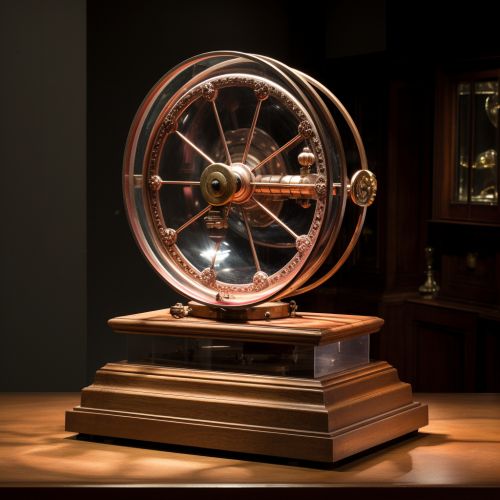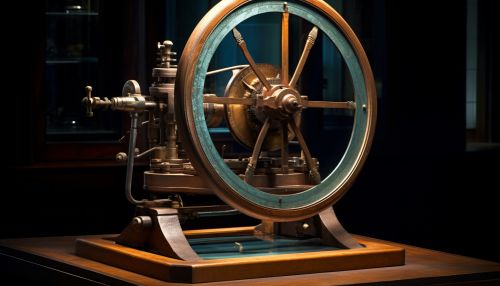Friction machine
Introduction
A friction machine is a device used in physics to generate static electricity through the process of friction. It is one of the earliest types of machines developed to study electricity and has been instrumental in the understanding of electrostatics. The machine operates on the principle of triboelectric effect, where certain materials become electrically charged after they come into frictional contact with a different material.
History
The first friction machine was developed in the 17th century by Otto von Guericke, a German scientist and inventor. His machine consisted of a sulfur globe which could be rotated and rubbed by hand. This was the first device to produce and collect a substantial amount of static electricity, and it led to many important discoveries in the field of electrostatics.
Design and Operation
A typical friction machine consists of a large wheel made of glass or other insulating material. This wheel is rotated at a high speed by a crank or motor. A pad, usually made of leather or fur, is pressed against the wheel. As the wheel turns, the friction between the wheel and the pad causes electrons to be transferred from one material to the other, creating a static electric charge.


The charge is then collected and stored in a Leyden jar or other type of capacitor for later use. The amount of charge that can be generated depends on several factors, including the materials used for the wheel and pad, the speed of rotation, and the atmospheric conditions.
Types of Friction Machines
There are several types of friction machines, each with its own unique design and method of operation.
Cylinder Machines
Cylinder machines use a large glass cylinder that is rotated against a pad. The pad is usually made of leather and is coated with a mixture of zinc and mercury, known as an amalgam. This type of machine was popular in the 18th century and was used by many scientists, including Benjamin Franklin.
Plate Machines
Plate machines use a large glass plate that is rotated against a pad. The pad is usually made of silk and is coated with an amalgam. This type of machine was popular in the 19th century and was used by many scientists, including Michael Faraday.
Disk Machines
Disk machines use a large glass disk that is rotated against a pad. The pad is usually made of fur and is coated with an amalgam. This type of machine was popular in the 20th century and is still used today in many physics laboratories.
Applications
Friction machines have been used in a variety of applications. In the early days, they were primarily used for scientific research to study the properties of electricity. Today, they are used in many educational settings to demonstrate the principles of electrostatics.
In addition, friction machines have been used in some industrial applications. For example, they have been used in the manufacturing of certain types of plastics and other materials that require a static electric charge.
